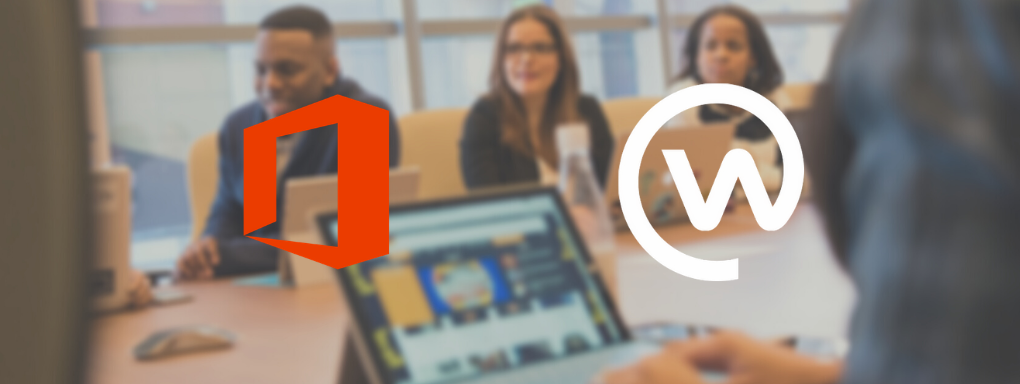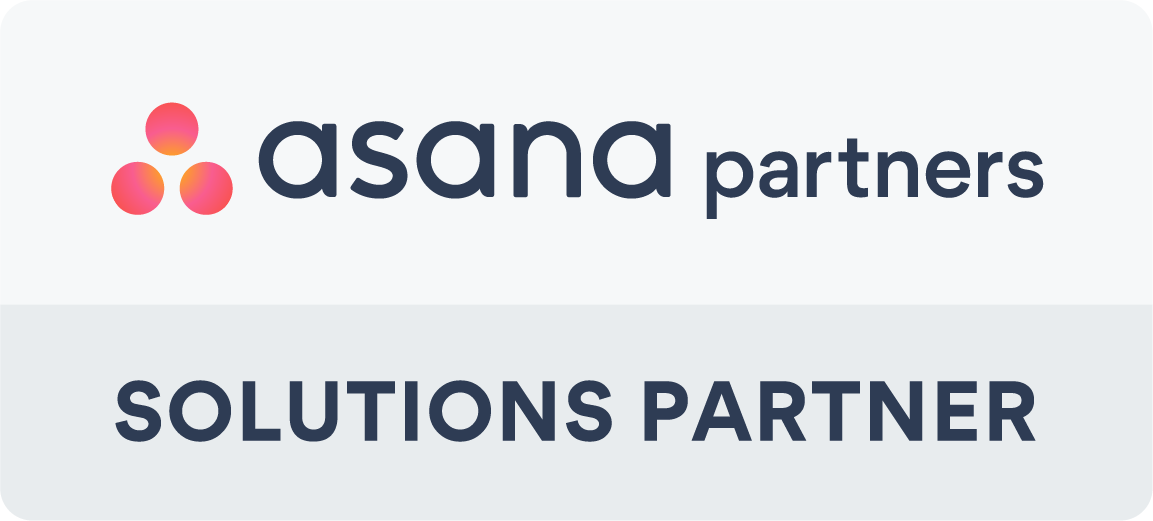🛑 STOP: Before reading this article, please be aware that Meta/Facebook Workplace is closing and will shortly migrate to Workvivo by Zoom. To find out more, please read our blog, Transition from Workplace to Workvivo: A Guide for Workplace Users
BONUS EBOOK: A Blueprint for CEOs Leading Digital Transformation Initiatives
Amongst internal communications in organisations, the idea of having Workplace by Facebook and Office 356 work together sounded like an intangible goal. However, as much as the organisations adore the usability and high adoption of Workplace by Facebook, their organisation runs on Microsoft tools. So how do you benefit from both Office 365 and Workplace by Facebook?
In terms of deciding, you don't need to be selective on whether you should adopt Microsoft or Workplace by Facebook into your business, both can co-exist in your organisation. As a matter of fact, most Workplace customers have seen better results once they have integrated Office and Workplace.
The SaaS Application Landscape
Customer used to purchase on-premise software usually from one or more blue-chip database and application vendors. Information Technology (IT) teams have promised that applications ran, captured vast amounts of data and stored it in data warehouses. When data from one system had to be made available in another, customers realised on IT teams.
User experience was an afterthought
With the emergence of modern SaaS apps, customers have slowly started to realise that lock-ins generated by the incumbents had inhabited them from selecting the best solutions for a specific purpose. CIOs therefore have grown weary of the incumbent software. Detecting an opportunity, a bevy of organisations filled the void with cloud applications that did specific things very well.
With the proliferation of specific apps to do specific tasks well, your potential customers now have an environment where they have a plethora of apps running in their organisations performing hundred of tasks.
Workplace is now integrated with more than fifty best-of-breed applications, including Office 365 (O365). Most customers have integrated O365 with their Workplace instance so that employees can move effortlessly between word, excel and Workplace.
Why use Workplace and Office 365?
In the past, the bespoke 'one size fits all' software was considered the digital transformation solution. Now customers do not have to decide on whether to select Workplace or Office. Workplace and Office work well together since both platforms are good at what they do.
Office 356 is used for office apps such as Word, PowerPoint and Excel. Sharepoint is useful for document storage, workflows, co-authoring and version control.
In contrast to Workplace by Facebook, it is used for building work communities, removing barriers for internal and external communication of an organisation and employee engagement.
What if your organisation is using Yammer?
Yammer has been a useful social networking tool for the past few years, but the downside of this is the fact that users don’t know how to use the tool properly. Despite the fact that is it packaged as part of Office 365, people see it as a separate point solution and the whole experience is very disparate.
Moreover, more than 2.27 billion people use Facebook every month and more than 1 billion people use Messenger every month. This is why Workplace is widely adopted within the first 60-90 days.
Workplace Offers asynchronous + synchronous communication
Yammer works differently, as a networking tool, it is only optimised for small groups of people, not organisation-wide communication. In contrast to Workplace, it offers a mobile-first, video first experience with both synchronous (work chat)and asynchronous discussion (workplace).
BONUS EBOOK: A Blueprint for CEOs Leading Digital Transformation Initiatives
What about using Workplace by Facebook with Microsoft Teams?
Microsoft Teams is a good tool for being organised, however, it is not a communication platform or true engagement engine for the organisation.
For one, Teams limits the number of members per Team up to 2,500, while Workplace is unlimited including multi-company groups. Teams also limits direct messaging to 20 without the use of third-party apps, while Workplace supports 250.
Interestingly, you can integrate Office 365 with Workplace. You can use Teams for its purpose of managing team projects and documents via a link to Workplace, while using Workplace for its purpose of people engagement and communication.
Better Together proof points
Below are examples of how Workplace by Facebook and Office 365 work better together:
- Content is Shared: Shared content is needed to make decisions. This could be a campaign results report from your marketing automation tool or your “Sprint” board from your project management tool or a Quip file with a draft plan. A better together world means that this content does not stay locked away in apps and places where it is created (SharePoint) but is available where conversations can be had and decisions can be made. It should just appear where conversations are happening
- Context is Provided: Workplace provides perspective on content. This could be a notification that your project manager updated the project plan. It could be that there is a conversation around why a task or a ticket was created or an alert that there is a spike in customer activity
- People should not have to wait for that information or have to remind themselves to go somewhere to pull the information. In Workplace, this kind of information can be put in motion quickly and provides context for the people
- Identity Understood: While content and context represent information visibility, access to the content should be governed by permissions that are inherited from one underlying source of truth. There should be no information breach because two applications have conflicting information regarding which permission model is the primary model. With Azure Active Directory (Azure AD) integration with Workplace, the customer’s cloud-based directory can maintain the version of truth
- SSO Makes Integration Easy: Workplace allows single-sign-on and simple integration with Office 365. Workplace also integrates with Azure Active Directory (Azure AD) for role-based access using Microsoft's multi-tenant, cloud-based directory, and identity management service. It combines core directory services, application access management, and identity protection into a single solution with Workplace
- Automated User Group Management Onboards Employees Quickly and Easily: Automate User and Group Management in Workplace using the customer’s organisational structures in Microsoft Azure Active Directory. This means employees are instantly able to operate from Workplace when they join a company and access the information they need to do their jobs
- Previewing Documents is Secure: Customers can easily share OneDrive file links securely on Workplace by browsing their OneDrive folders without even leaving the Workplace tab. Once the OneDrive file link is shared, people can preview the document in the news feed without leaving Workplace. When a user clicks the Office file link, the file will be opened directly in the respective Office Online viewer. Users can then choose to either edit it online or open it in the native Office clients for further changes
- SharePoint Bot: Users can search for SharePoint documents from within Workplace using a SharePoint Bot. Workplace is a great platform to promote “Bots” that allow people to interact with other apps like O365 from within Workplace. Bots reduce repetitive tasks – a key benefit of using Workplace
What makes Workplace from Facebook different from other platforms?
Workplace by Facebook reduces the distance between people by breaking down barriers and supporting better communication. Here are 5 reasons why Workplace offers unique value to each customer:
- Enable company-wide live broadcast: Communicate with all employees around the world in real-time. No company offers Live Stream experiences like Workplace
- Enable rich content sharing: With Workplace, people can post with rich content, not just text. They can post videos, pictures, live-stream broadcasts, tag, add photos, express reactions etc. Expression makes it easier to make an emotional connection between the sender and recipient
- Break down barriers: Workplace supports translation. You can post in English and your colleagues in different countries can read the messages translated to their native language
- Create institutional memory: Workplaces moves knowledge out of email inboxes and into the group post so information can be shared now and in the future. For example, you could great a 'Company FYI' Group and post all big news about the company. If someone new joined the company, s/he can see the history of the announcements for the last few months
- Increase relevancy with groups: Workplace supports communication at scale. Today with email systems, when you send an email to multiple people if one person says a simple “Thank you” or “Awesome”, everyone’s inbox blows up. Workplace allows communication organisation-wide (at scale) with relevancy by showing all acknowledgements in one place
If you would like to understand more about how Workplace and O365 can work together in your organisation, speak to one of our experts.



